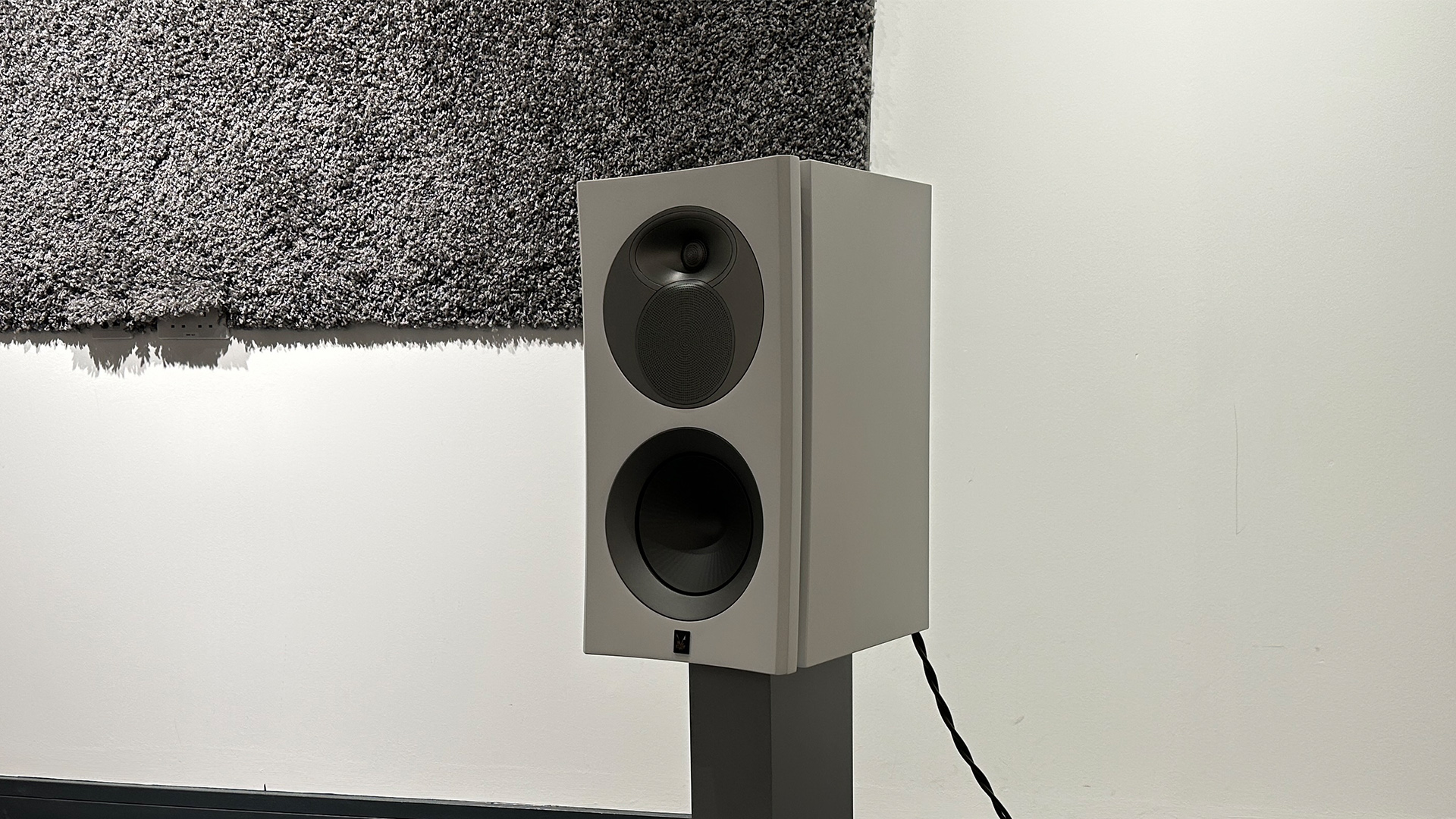Best projectors 2025: 4K, Full HD, ultra short throw
Get the authentic big-screen movie night experience
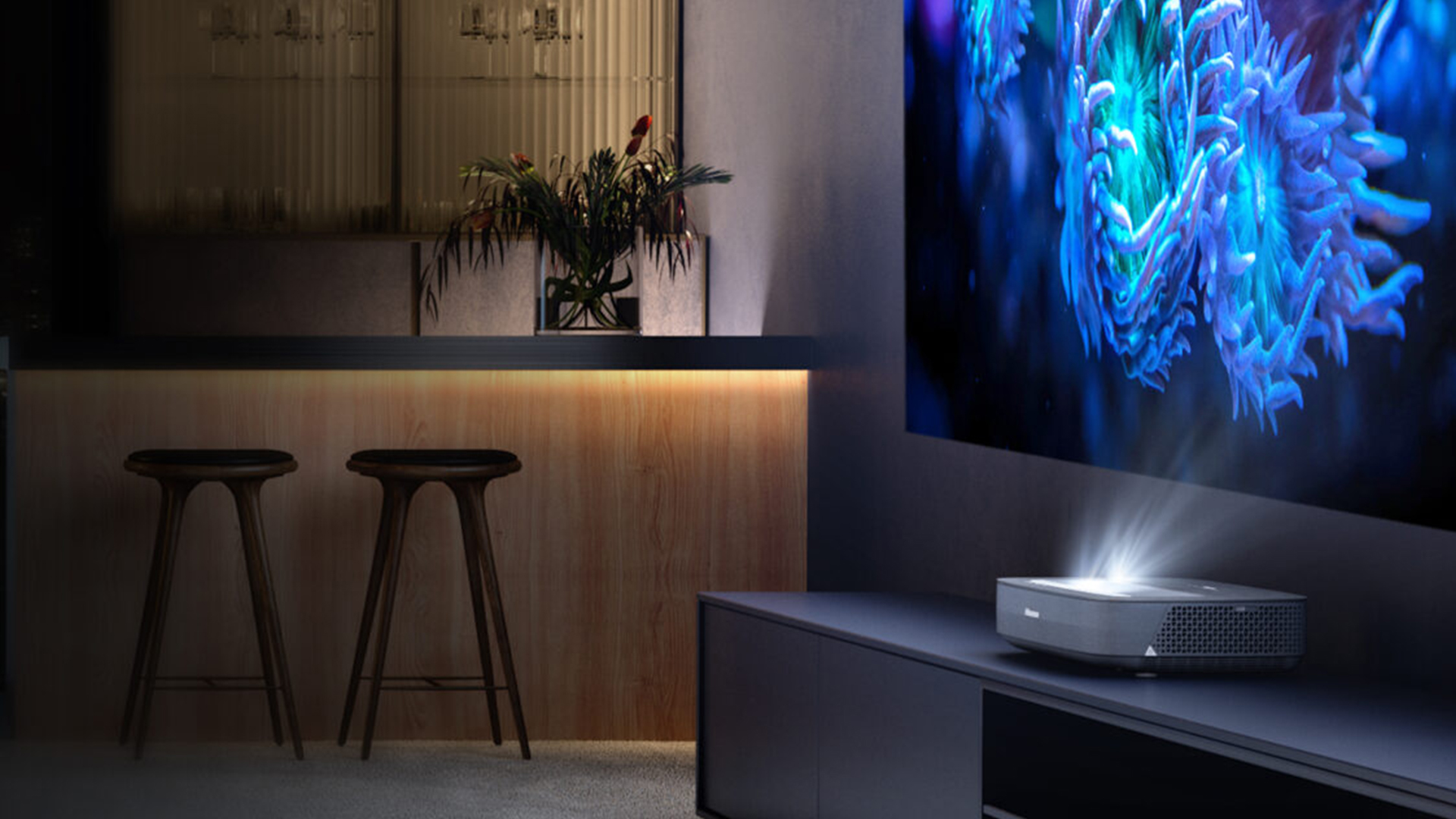
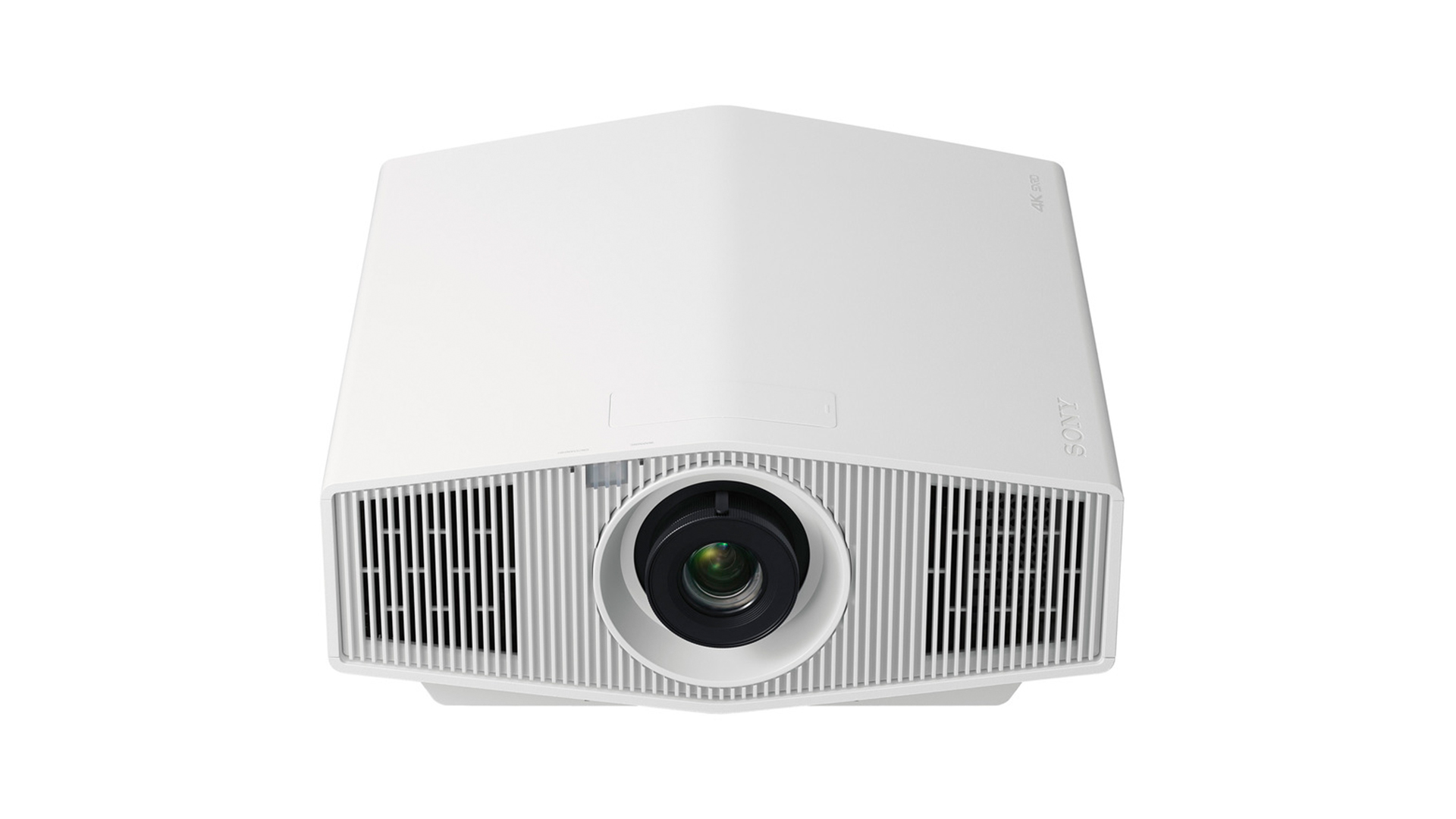
1. Best overall
2. Best entry-level
3. Best high-end
4. Best ultra short throw
5. Best premium ultra short throw
6. Also consider
7. How to choose
8. How we test
We love a big TV, but there's nothing quite like a projector for the true home theater experience. Not only does a projector create a far bigger image than all but the most impractical of TVs, it also sits out of the way and so won't dominate the room when not in use.
And with ultra short throw (UST) models, you can even position the projector just inches from the wall.
With models becoming more affordable than ever, you really have no excuse for not getting on board.
But which projector should you choose?
The good news is, there are plenty of excellent models around. We've tested all of the below, and rate them all very highly.
While we obviously consider factors like sound and which platform they use, our focus is very much on picture quality. Other issues can be addressed with standalone sound systems or streaming sticks, but there's not much you can do about a crummy picture.
Thankfully every model on our list excels in this area. We've got all types of models, from premium beamers to budget options and ultra short throw projectors that could replace your TV for everyday viewing.
Scroll down to view our favourite projectors on the market right now. Happy viewing!

I've tested nearly every form of projector during my tenure as a staff writer at What Hi-Fi?. That includes long throw, short throw and ultra short throw units, as well as the occasional portable unit here and there. After using everything from high end units that cost well over 10 grand, to budget beamers that cost less than a tenth of that, I'm certainly able to deduce what makes a quality projector.
August 2025: We've swapped the Hisense PL1 for the newer PL2, and added the Hisense PX3-Pro as best premium ultra short throw projector. March 2025: We have added a BenQ projector as a new best mid-range option in our main list, while the Sony Bravia 8 replaces its predecessor as our new favourite high-end projector. Newly reviewed Xgimi and Hisense projectors take spots in our Also Consider list, too.
The best projector overall
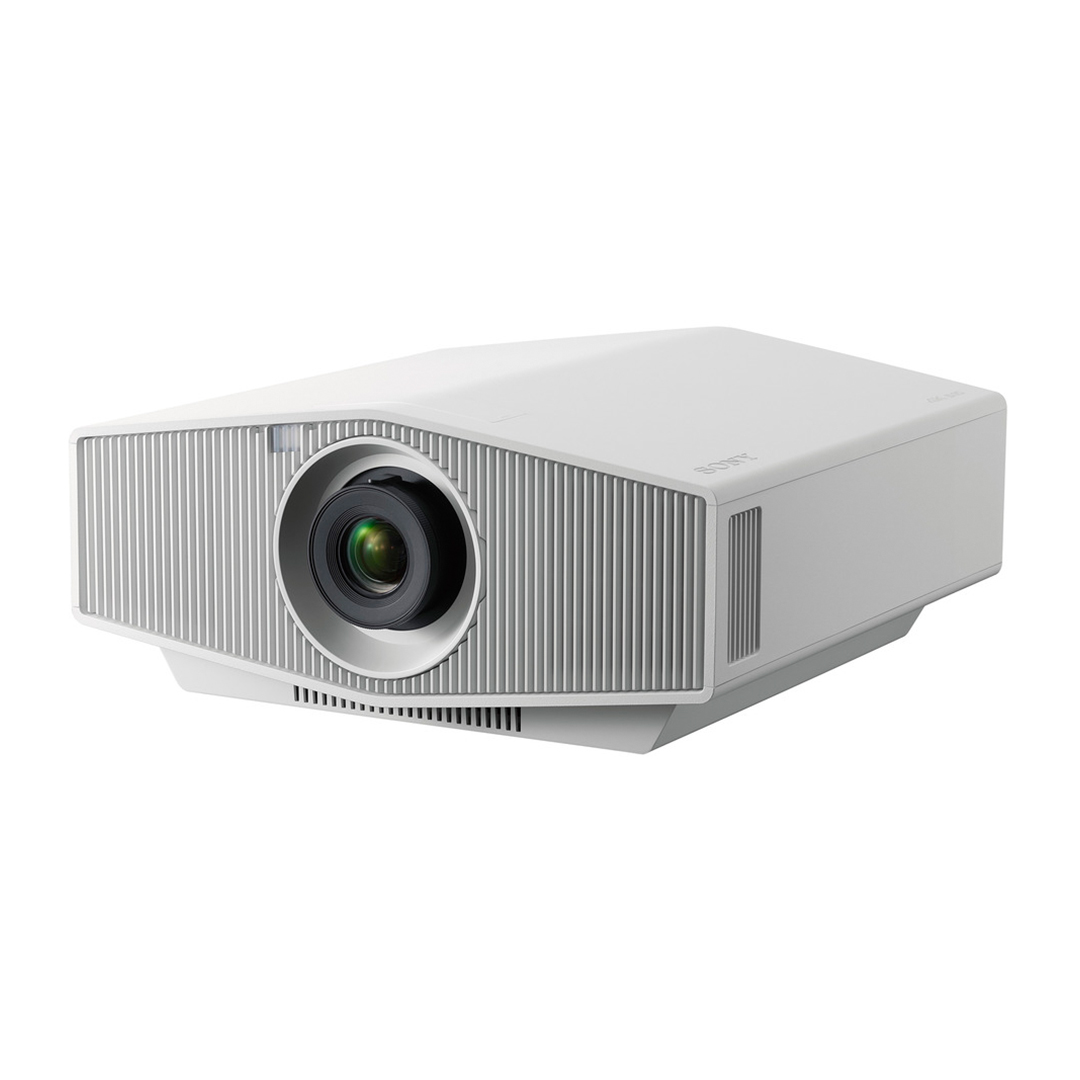
Specifications
Reasons to buy
Reasons to avoid
The VPL-XW5000ES is a watershed moment for not just Sony’s projection business but the home theater world in general. Why? Because it’s the cheapest truly native 4K laser projector the home theater world has ever seen.
Prior to the XW5000ES, Sony’s entry-level SXRD 4K projectors – such as last year’s VW290ES (VW325ES in the US) – have relied on lamp rather than lazer technology. Moving to lazer, though, means no longer having to put up with the inconvenience and ongoing costs associated with having to replace lamps every few thousand hours of use, or the relatively rapid degradation in brightness that lamps suffer.
While you inevitably have to accept a compromise or two in return for Sony delivering a full 4K laser projector at this price, those compromises are ultimately crushed by the joyous impact the XW5000ES’s combination of lazer lighting and exceptional X1 Ultimate processing has on both your immediate and long-term movie night thrills.
Read the full Sony VPL-XW5000ES review
The best entry-level projector

Specifications
Reasons to buy
Reasons to avoid
It's a shade pricey for an entry-level device but, make no mistake, the Epson Home Cinema 3800 (known as the EH-TW7100 in the UK) is the king of affordable 4K projectors. It’s easy to set up and install, and produces a picture that’s reminiscent of what you'll get at the movie theater.
You'll get a great image right out of the box without needing to be any kind of expert at tinkering with the settings. All the preset modes are very well judged and it gives an excellent level of black depth and dark detail for a projector at this price. Colors are balanced and motion is naturally smooth.
That said, it's as much the convenience of this machine that makes it so good. Bluetooth allows for direct connection with a wireless speaker or soundbar, and the high luminance means that it's usable in moderately lit rooms.
In other words, an AVR, speaker package and home cinema room are not entirely necessary. How's that for a superb family projector?
Read the full Epson Home Cinema 3800 review (EH-TW7100)
The best mid-range projector
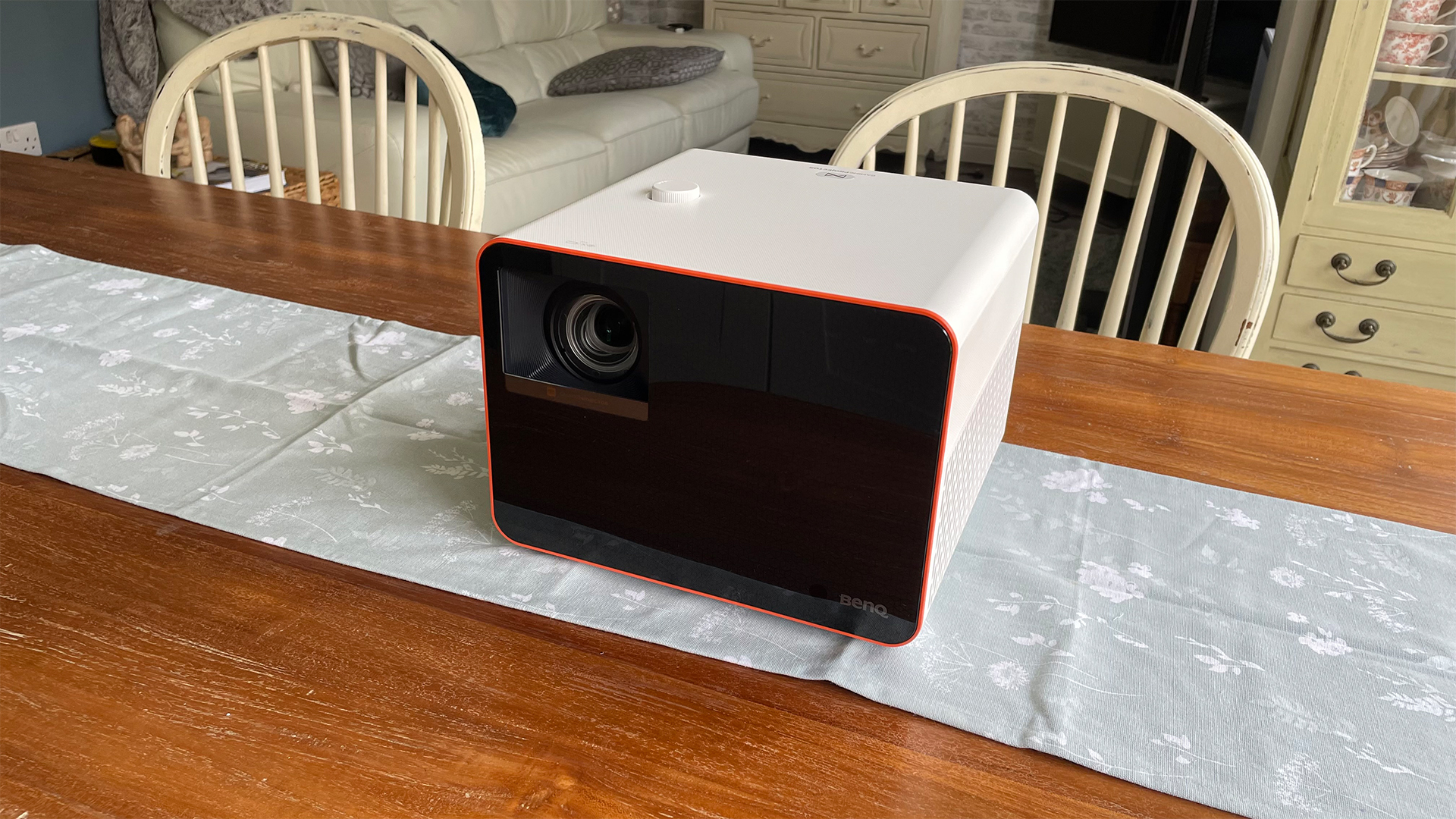
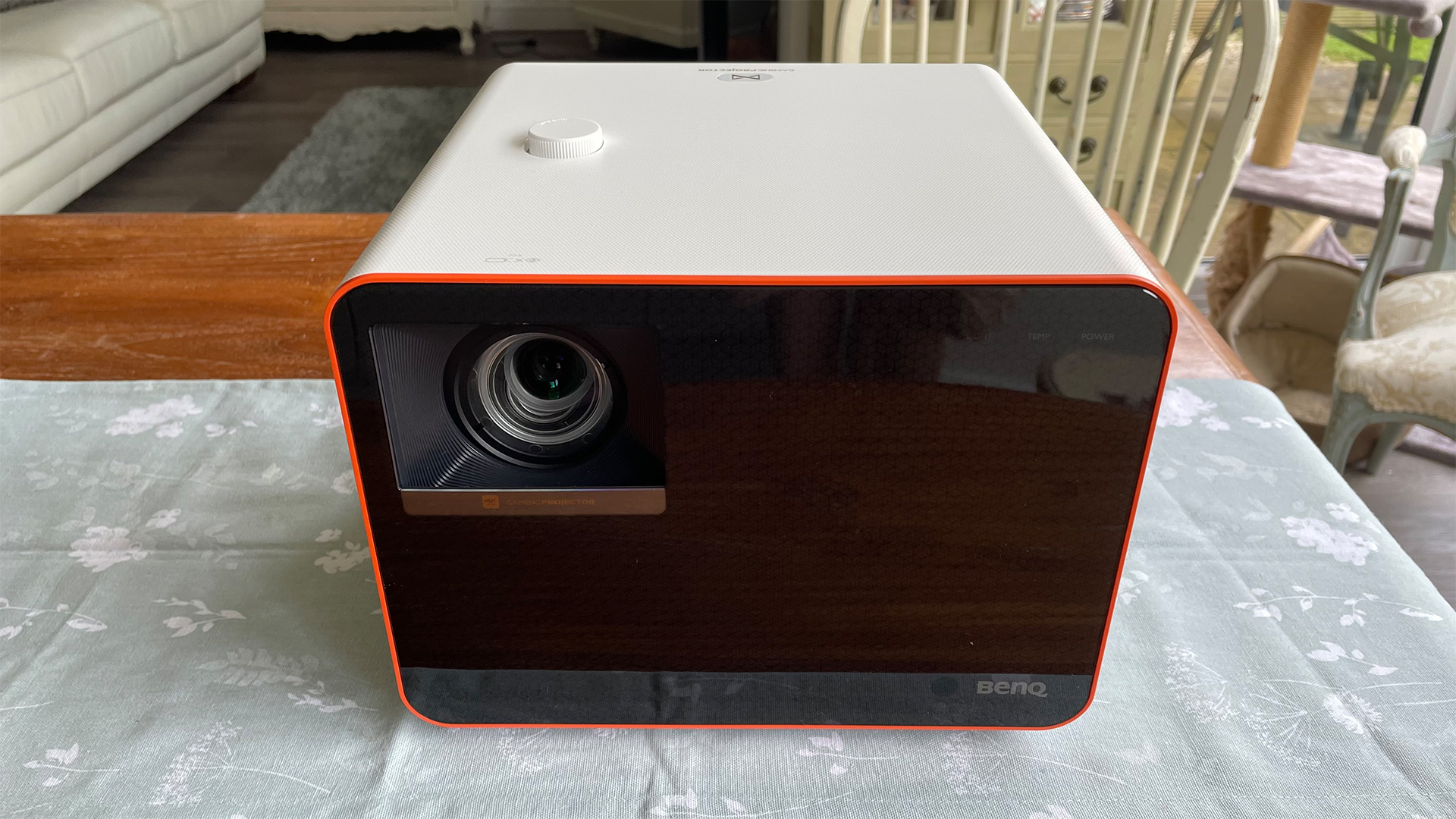

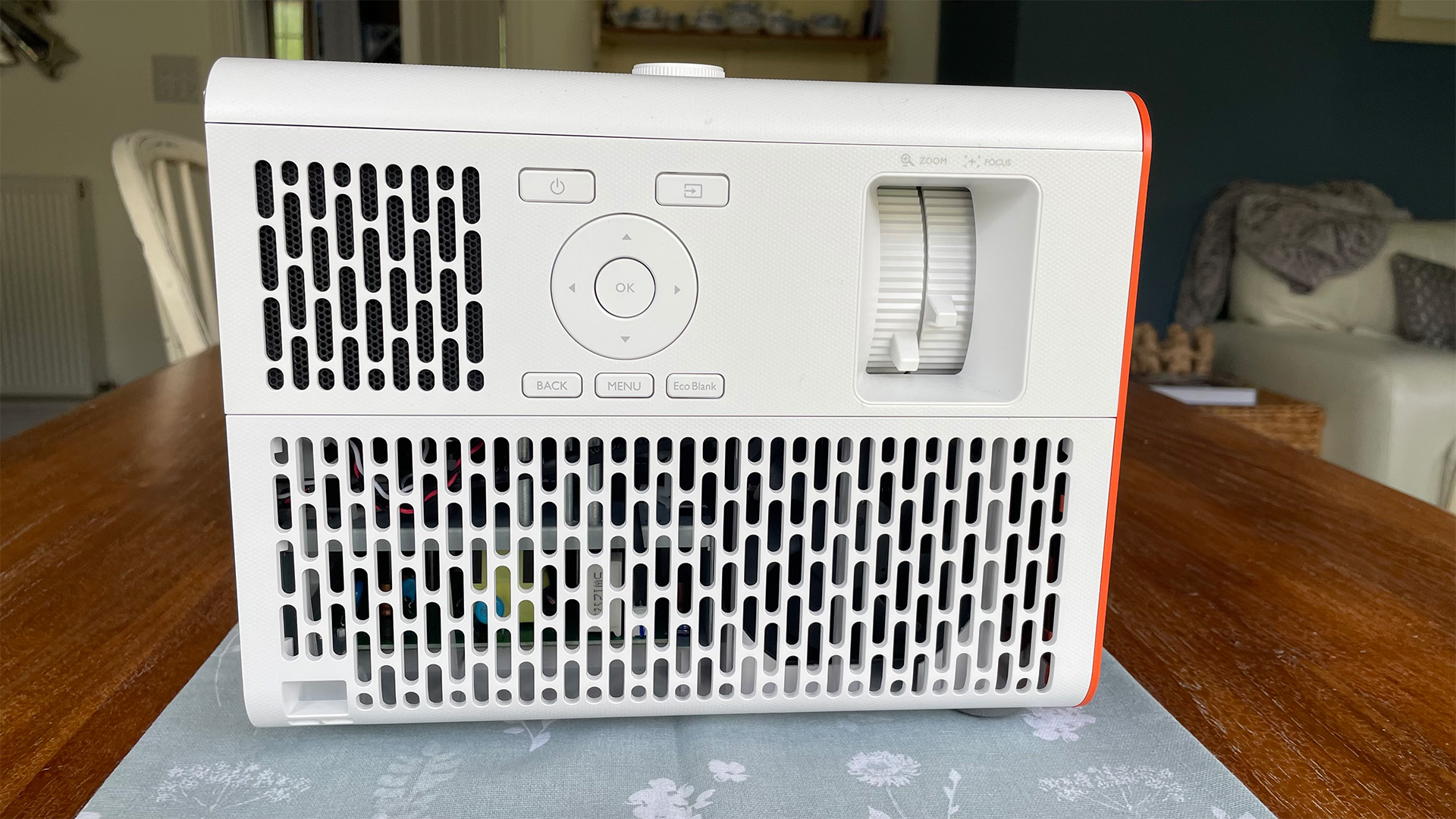
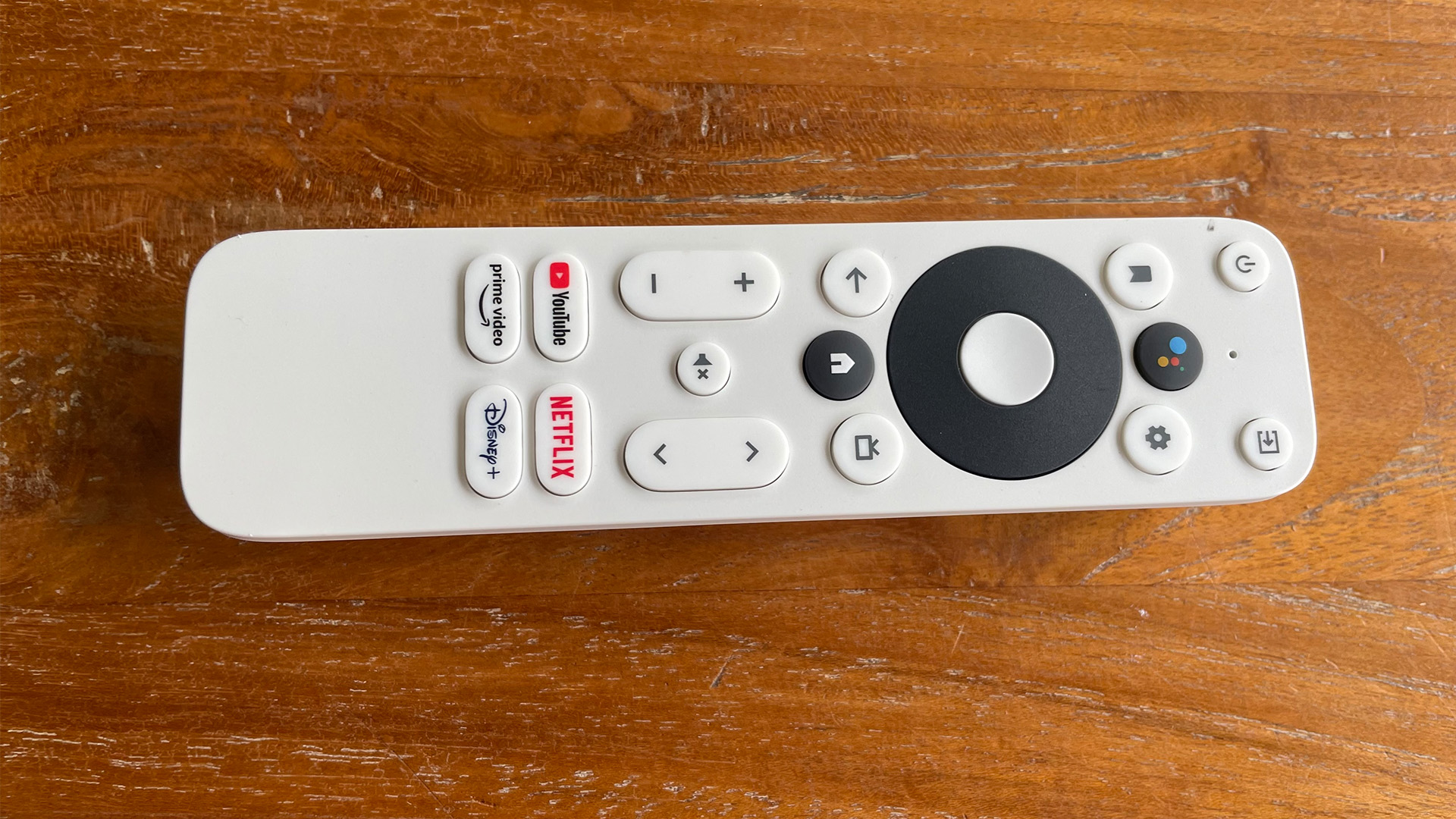
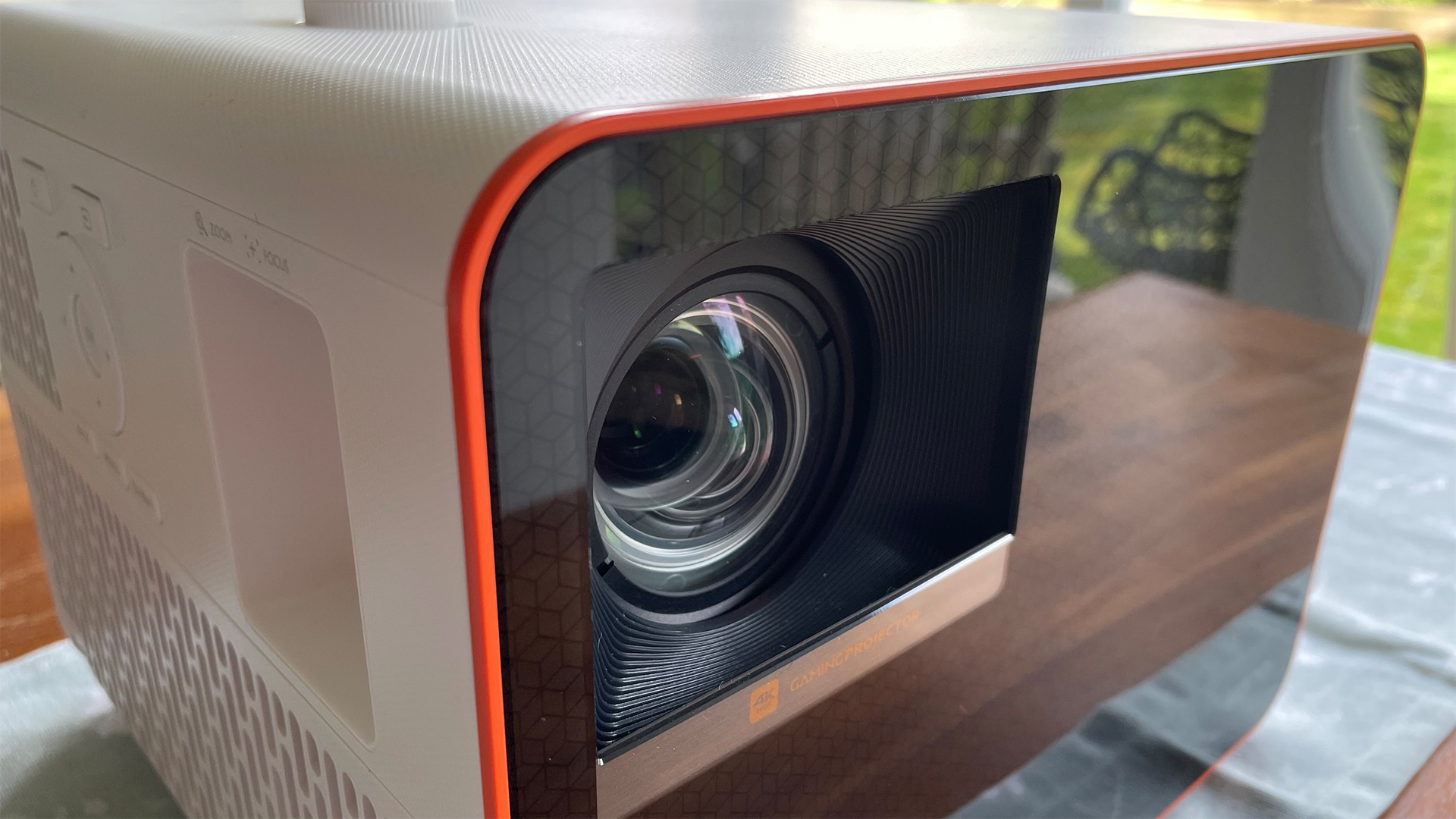
Specifications
Reasons to buy
Reasons to avoid
Despite this mid-range BenQ projector being marketed (and physically branded!) as a gaming projector, its strong gaming chops (and hip looks) are actually just the start of its charms.
This DLP projector, illuminated by a 4LED lighting system, uses XPR technology to create a 4K resolution effect, complemented by HDR10 and HLG formats as well as HDR tone mapping and a proprietary-to-BenQ ‘SSI’ Dynamic Black automatic light management technology that’s claimed to deliver a very high contrast ratio of 600,000:1.
The X3100i’s twin HDMI 2.0b connections support 4K at 60Hz and 1080p at 120Hz, while ALLM switching and eARC are also onboard so that you can pass 7.1 and even lossless Dolby Atmos game (or movie) soundtracks through the projector to a connected soundbar or AV receiver.
There's video streaming service integration too, although it's a little buggy and not all that well implemented, as is often the case with projectors.
So far, so good – and it gets better. The X3100i performs so impressively that we awarded it a What Hi-FI? Award. Its color performance is a cut above most of the competition, it remains consistently natural looking during both bright and dark scenes, and motion looks credible and natural, too, even with 24p movie sources – and without any need to apply any motion processing.
True to its design, the X3100i delivers one of the most responsive gaming experiences we’ve had outside of a dedicated gaming monitor, too.
Don't expect absolute blacks and zero rainbow effect (where stand-out bright objects can cause you to see stripes of red, green and blue flitting in your peripheral vision) and we are confident you'll be as impressed by this BenQ projector as we are.
Read our full BenQ X3100i review
The best high-end projector
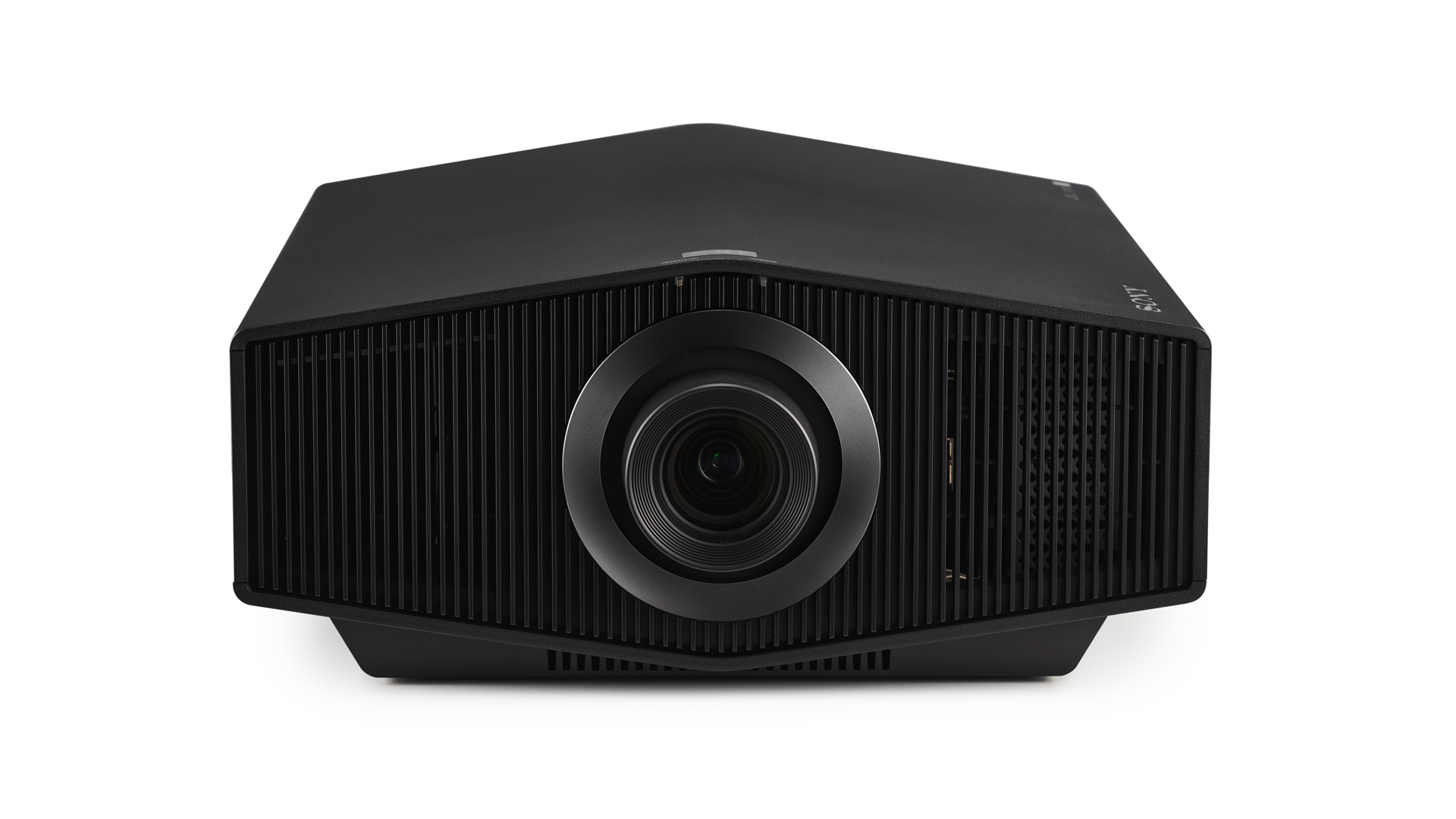
Specifications
Reasons to buy
Reasons to avoid
Sony’s latest premium home theater projector picks up where the serial Award-winning VPL-XW7000ES leaves off and fills the big shoes amiably.
With the Bravia 8, Sony delivers yet another blockbuster projector worthy of your home cinema. It isn’t cheap, but if you pit it against its bigger five-star sibling, the Bravia 9 (in our 'Also consider' list), the price seems more palatable.
If you want a crisp picture with rich colors and supreme contrast, then the Bravia Projector 8 is a great pick. Detail levels are standout, though this should come as no surprise for a native 4K projector of this stature. You get excellent black levels by projector standards, too, and motion performance is impressive.
Picture quality aside, arguably the best feature of the Bravia 8 is the motorised lens adjustment system, which our expert reviews ream said "makes set-up a smooth and frustration-free experience".
Two HDMI 2.1 sockets that support 4K/120Hz signals with Auto Low Latency Mode (ALLM) will appease PlayStation 5, Xbox Series X and gaming PC owners who want to game on the big screen, too.
Read the full Sony Bravia Projector 8 (VPL-XW6100ES) review
The best ultra short throw projector
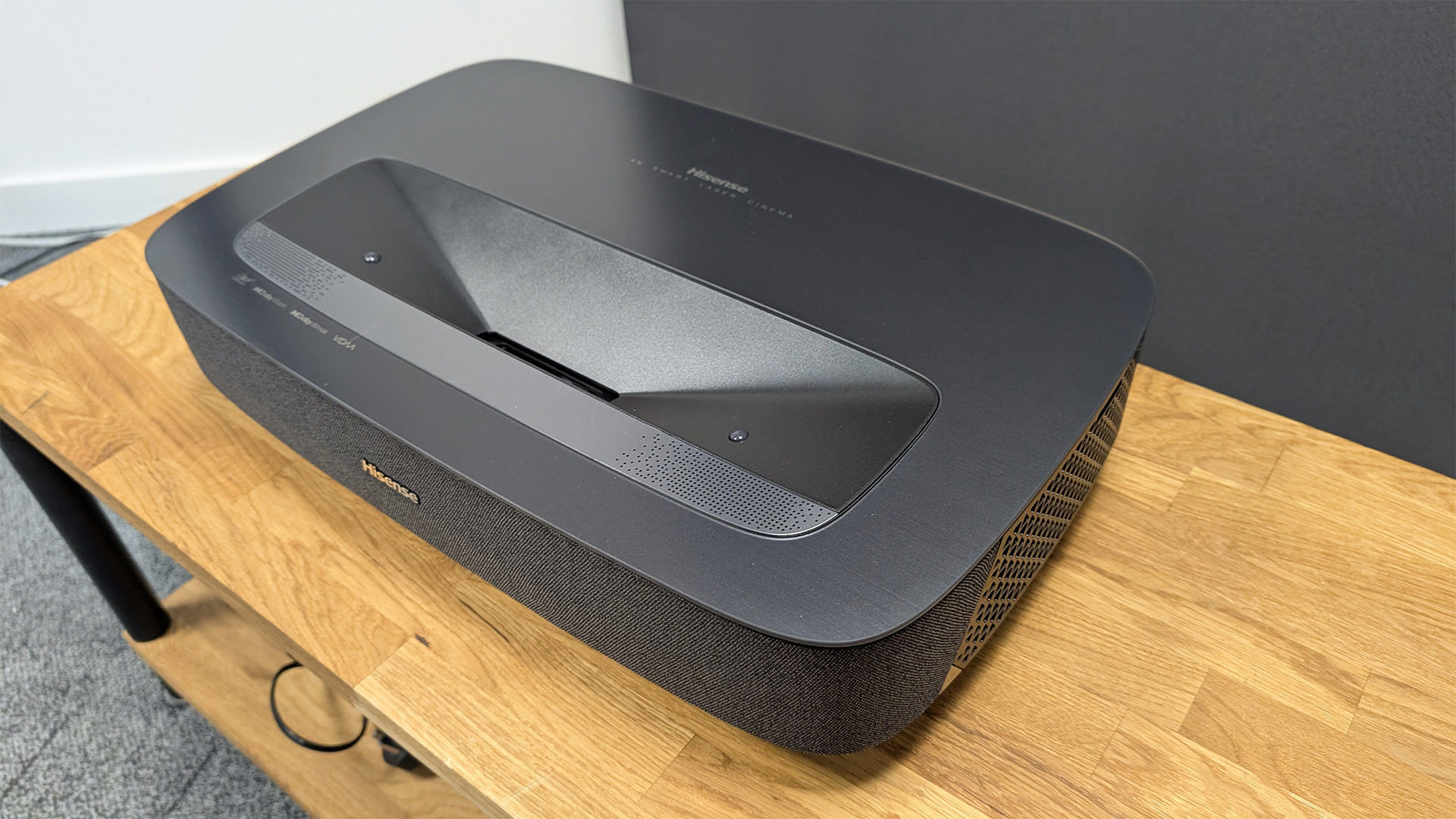
Specifications
Reasons to buy
Reasons to avoid
It's no easy task following an Award-winning product, but Hisense doesn't seem phased in the slightest. The PL2 takes everything we loved about the PL1 ultra short throw projector and cranks it up a notch. It's another stellar product, and the best in its field.
It's priced sensibly, with the same MSRP as its predecessor. Which is a lot more reasonable than some similarly-specced models that have graced our test rooms of late.
It takes similar design cues as the PL1, which makes it look pretty nondescript. But considering it's designed to be inconspicuous, that's a good thing.
It's also slightly smaller than the PL1, which is welcome.
Like most ultra short throw models, the PL2 doesn't have physical lens controls, but relies on keystone and digital picture correction. Which can make setting it up a process of trial and error.
The PL2 can project an image of up to 150 inches in size, which is substantially bigger than the PL1's 120 inches. Minimum picture size remains the same, at 80 inches.
It's brighter too, with a maximum level of 2700 ANSI lumens (600 more than the PL1). And it has a higher contrast ratio of 3000:1.
While HDMI 2.1 is onboard, the PL2 can only handle a maximum refresh rate of 60Hz at 4K resolution, so there's no 4K/120Hz gaming. But you can game in 1080p HD at 120Hz, so what you lose in resolution you gain in responsiveness.
All four formats of HDR are supported (which isn't that common), and the Google TV operating system makes a welcome return (UK buyers will have VIDAA U7).
The picture quality is even better than the Award-winning PL1. Though you will need to tinker with the settings to get it looking its best.
Then it's among the best performers at its price. As we saw when we watched Dune: Part Two on 4K Blu-ray.
"The additional brightness gives explosions and the desert sand noticeably more impact and vibrancy compared with the PL1, which was best in class at this price less than a year ago," we wrote in our review.
"Peaks are higher, but still controlled, and there's a nice hue of orange at the explosion's core that appears as pure white on the older model."
Black levels can appear a little grey, but still offer a good amount of dark detail, with lighter elements popping with suitable vibrancy.
Sonically, the PL2 is one of the better UST models around. It stays in its lane, refusing to overstretch its sonic capabilities, meaning minimal distortion. But the sound tends to lack height and width, along with a sense of directionality.
Voices are clear, however, and sound distinct from the background noise. Though the low end struggles, so take our advice and invest in a separate sound system.
For its faults, the PL2 is a great value projector, and currently the best ultra short throw model around.
Read the full Hisense PL2 review
The best premium ultra short throw projector
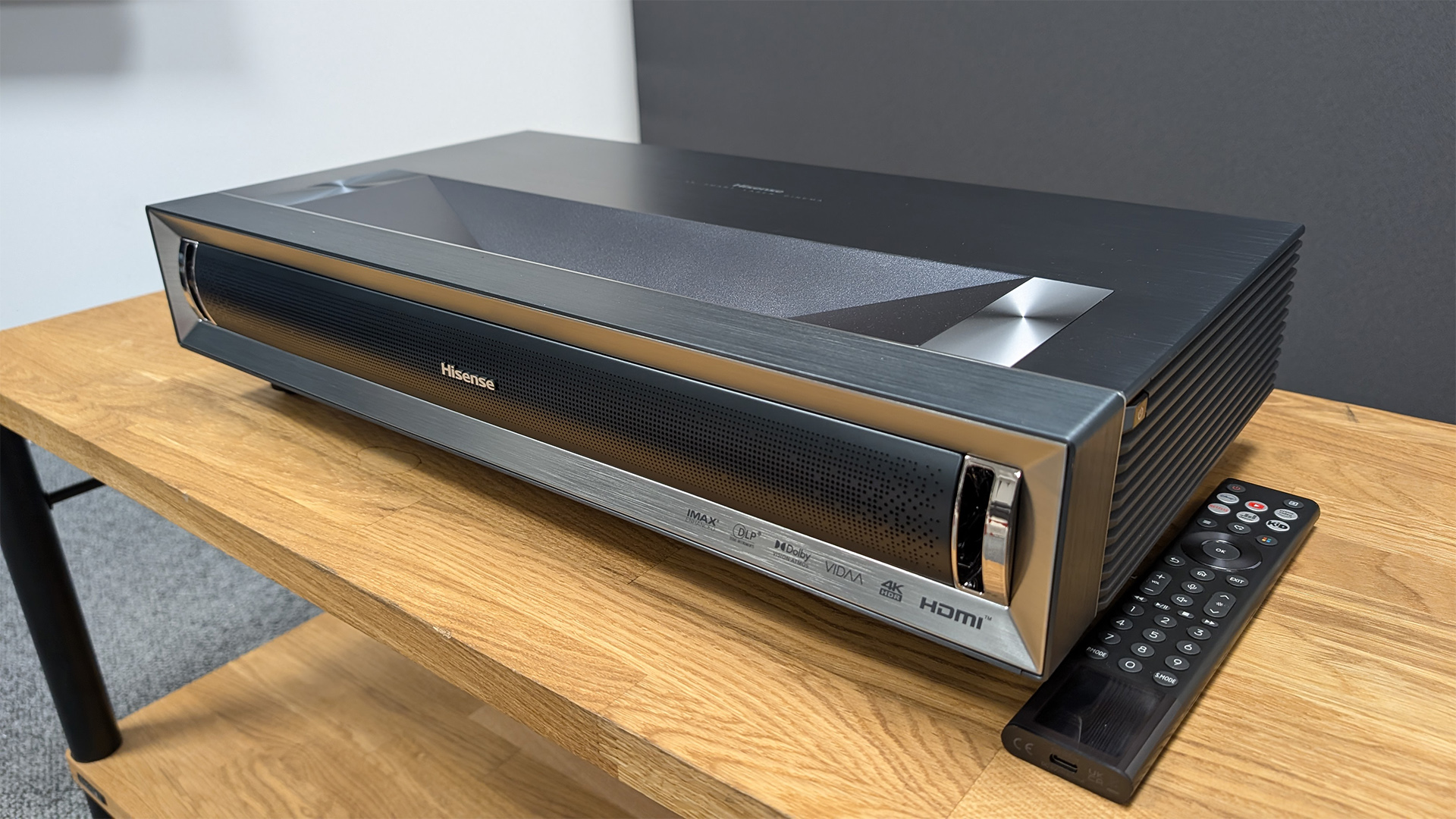
Specifications
Reasons to buy
Reasons to avoid
The PX3-Pro is one of the few projectors we've seen that's certified as 'designed for Xbox Series', meaning it should serve gamers as well as it does movie fans.
But don't worry, its not gone all Alienware on the design front. In fact, you wouldn't know this was aimed at gamers at all, from its minimalist, mature styling. It is a little longer than some USTs, but its low height ensures it doesn't intrude too much (part of the point of having a projector is that it doesn't dominate the room like a big TV).
It's pretty easy to set up (though as on other USTs, there are no physical lens controls). But the remote could do with a backlight – you should watch a projector in the dark, after all.
Features-wise, it's stacked, both for games and movies alike. It has impressive figures: a native contrast of 3000:1, 3000 ANSI lumens max brightness and 110 per cent of the BT.2020 colour space favoured by movie creators.
It supports IMAX Enhanced (a first for Hisense), all four formats of HDR, the Xbox certification, and two HDMI 2.1 ports capable of enabling the gaming features 4K/120Hz and ALLM.
The picture is very good indeed, as you would expect from an Award-winning projector. There's a fantastic level of detail, natural yet vibrant colours and a lovely depth to images. As evidence from a scene in Blade Runner 2049: "Highlights around the steaming kettle resulting from stray light emanating from a dirty window offer true depth, making for an authentic, immersive viewing experience," we wrote in our review.
The only downside is motion, which is either a touch jagged or a little artificial, depending on your level of motion handling. It could be smoother.
But overall it's a wonderful performance, with class-leading dark detail and brilliant peak brightness. And the sound is fine, but will be immeasurably improved by a dedicated sound system – anything less, and you're doing the experience an injustice.
Read our full Hisense PX3-Pro review
Also consider
- JVC DLA-NZ7: This premium projector rivals the Sony Bravia 8 in this list. It delivers a crisp, detailed and supremely natural picture that will impress purists who want the most authentic picture from their projector.
- Hisense C1: This all-in-one cinema-in-a-box solution features an impressively punchy (albeit not entirely accurate) picture, powerful built-in JBL speaker system, and Hisense's VIDAA smart streaming platform baked in.
- Samsung The Premiere LSP9T: This premium ultra short throw projector makes a convincing case for ditching your TV in favour of a projector. Anyone familiar with a Samsung TV will feel right at home with Samsung's Tizen smart system, while the bright, colorful picture and well projected sound seal the deal on this UST beamer.
- Xgimi Aura 2: While it prioritises exuberance over naturalism a little too much and lacks a few Android apps, this Xgimi is still seriously enjoyable to watch and impressively adapts to both light and dark room conditions.
- Sony Bravia 9: The next model up from the Sony Bravia 8 in this list is hugely expensive, but its picture quality is truly, madly, transportively magnificent, enjoying levels of detail, color volume, brightness and three-dimensionality, especially with HDR visuals, that we’ve never seen before.
- BenQ W5800: A fine rival to the Sony VPL-XW500ES, the W5800 offers class-leading color accuracy, impressive contrast boosting and a versatile set up. It's serious about movies, as are we.
How to choose the best projector for you
There are a multitude of factors to consider when choosing the right projector to suit your needs. Whether it's budget, resolution, screen size or even the type of lamp, all of these factors can drastically alter the performance of a projector.
It's important to recognise the differences between projector lamp technologies, as different options give you different performance.
Lazer-based projectors are quick to reach optimal performance after booting up, they produce more accurate colors and have longer lifespans due to not requiring a bulb to power the picture.
However, they tend to be more expensive than DLP (Digital Light Processing) LED and LCD projectors, which in turn have their own benefits and caveats.
Ultimately, the goal with a projector is to encapsulate the cinematic feeling of a movie theater at home, so this is where screen size and resolution are important.
Ideally, this is where a 4K projector would be best for crisp and clear visuals. As you'll notice, all of our top picks are either native 4K projectors, or achieve a 4K-like image through clever trickery for a higher picture quality.
While resolution is a pivotal aspect of the picture quality, its almost equally important counterpart is color. Projectors can often struggle when it comes to color, especially with darker shades. Contrast is key here to ensure that black depth is the best it can be, although no projector will be able to live up to an OLED TV in this regard.
Within the mix are also some ultra short throw projectors.
These can project a big, clear image onto a wall from a very short distance away, making them ideal for space-saving set ups or for those wanting to avoid wall- or ceiling-mounting their projector.
Then there are portable projectors, which are ideal of taking on the go or using outside to create a grab-and-go cinema experience. They might not match up with the performance of dedicated home cinema projectors – the fact that none have made our list should tell you that – but you're paying for the experience and versatility here. You can't beat an open-air cinema experience under the starry night sky after all.
We do often recommend that you budget for a speaker when shopping for a projector, as although many options here include on-board speakers, they are invariably pretty poor.
Similarly, while some projectors do now feature built-in streaming platforms, they're often a bit patchy in terms of performance and app selection, so it's often worth keeping some cash aside for a dedicated streamer.
How we test projectors
Testing projectors involves taking the time to explore their capabilities fully through lots of options-tweaking and content-watching. This includes checking every item in the settings menu, and individually tweaking picture features to ensure the projector is giving us the best visual performance it can.
We conduct these tests in our state of the art testing room, which is outfitted with a 100-inch screen and a plethora of external sources to hook the projectors up to, including 4K Blu-ray players, video streamers and games consoles.
This is also where each of these projectors meets its rivals, as every product is tested side-by-side with the competition to ensure it meets expectations and so that its place in the market is considered as a whole – no product exists in a vacuum after all.
We test using a wide range of content from 4K Blu-rays, to streaming services, video games and standard definition DVDs to make sure all kinds of content are put through these projectors. This helps us find the strengths and weaknesses of each projector.
At the end of this process, a verdict is reached by a team of reviewers who work closely together in order to ensure that each projector is tested fairly, and to avoid the possibility of any personal preferences creeping in.
This is also to make sure our reviews are consistent and thorough, and so that no feature or flaw is missed within our testing process.
F.A.Q
Should I get a lazer or lamp projector?
Why you can trust What Hi-Fi?
All models on this list use a lazer light source, as we find most manufacturers are using this over traditional bulb light sources. The benefits include more vivid colors and better image quality (in most cases), lower power consumption, near instant boot up time and greater longevity.
What's the difference between native 4K and pixel shifting 4K?
A lot of projectors claim they feature a 4K resolution image, but not all 4K projectors are created equally.
Some projectors have what's known as a "native 4K resolution", meaning they output around 8 million pixels directly from the chipset with no additional processing. Examples of this include both Sony units on this list, as they both output the full 4K resolution by reproducing each pixel individually.
Other projectors achieve a 4K resolution via a process known as "pixel shifting" – although different manufacturers usually have their own term for this technology.
This involves projecting two Full HD (1920 x 1080) versions of the picture with the pixels shifted slightly to the side (hence the name) which, in theory, delivers a 4K 3840 x 2160) image.
There are pros and cons to both, but the bottom line is that native 4K almost always looks more authentic and sharper. However, units that support this tend to be more expensive.
Do I need a screen?
If you want to get the very best performance out of your projector, you're going to want a good screen.
While a white wall will work if needed – and many manufacturers include automatic calibration modes to allow users to project on to different colour walls now – a quality screen will always provide the best performance.
If you can track down a high gain screen, then you'll be rewarded with a brighter picture that can better combat ambient light. Or opt for a low gain screen if you plan on using your projector in a dedicated home theater room with controlled lighting – as these provide better viewing angles and a more even picture.
Recent update log
- 14th August 2025: Swapped Hisense PL1 for PL2. Promoted Hisense PX3-Pro from 'Also consider' to the main list as best premium ultra short throw projector. Added BenQ W5800 to 'Also consider'.
- 13th May 2024: Swapped the LG CineBeam HU715Q out for the Hisense PL1 due to the Hisense beating the LG at our yearly Awards. Also added further options under the "also consider" tab and an F.A.Q section.
MORE:
These are the best surround sound speaker systems
Take a look at the best home theater deals
The latest hi-fi, home cinema and tech news, reviews, buying advice and deals, direct to your inbox.
Lewis Empson is a Senior Staff Writer on What Hi-Fi?. He was previously Gaming and Digital editor for Cardiff University's 'Quench Magazine', Lewis graduated in 2021 and has since worked on a selection of lifestyle magazines and regional newspapers. Outside of work, he enjoys gaming, gigs and regular cinema trips.
